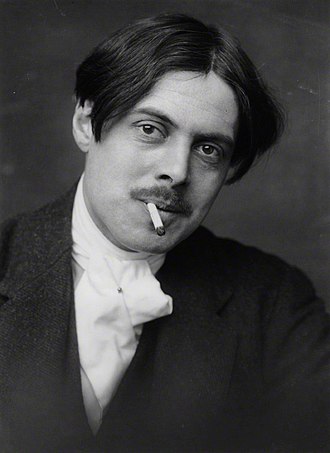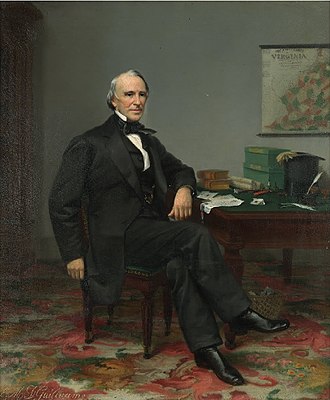Discover Your Roots
SIGN UPDiscover Your Roots
SIGN UPWyndham is a male name of English origin, meaning "From Wymond's Homestead." The name is associated with the idea of a homestead belonging to Wymond. It is primarily a male name and has been used as both a surname and a given name. The name has historical significance and is linked to various places worldwide, including Australia, the United Kingdom, the United States, New Zealand, and Hong Kong. Additionally, it is connected to several organizations and businesses, such as Wyndham Hotels & Resorts and Wyndham Vacation Resorts Asia Pacific. The name Wyndham has ties to a PGA golf tournament, educational institutions, and a suburb in Pennsylvania. Overall, Wyndham carries a sense of heritage, connection to land, and a strong historical background.

Percy Wyndham Lewis (18 November 1882 – 7 March 1957) was a prominent British writer, painter, and critic, known for his significant contributions to the Vorticist movement in art. He co-founded the movement and edited Blast, its literary magazine. Lewis's artistic endeavors extended into the realm of literature, where he penned several notable novels, including Tarr (1916–17) and The Human Age trilogy, consisting of The Childermass (1928), Monstre Gai (1955), and Malign Fiesta (1955). Additionally, he authored two autobiographical volumes, namely Blasting and Bombardiering (1937) and Rude Assignment: A Narrative of my Career Up-to-Date (1950). Lewis's early life was marked by a diverse educational background, including time at the Slade School of Fine Art in London and studies in Paris, where he encountered the philosophical teachings of Henri Bergson and developed his distinctive style of geometric abstraction. During World War I, Lewis served as a second lieutenant in the Royal Artillery and produced impactful war art, reflecting his experiences on the frontline. His novel Tarr is recognized as a pivotal work in literary modernism. Percy Wyndham Lewis remains a significant figure in the realms of art, literature, and criticism, leaving a lasting impact on the cultural landscape of his time.

Wyndham Robertson (January 26, 1803 – February 11, 1888) was a prominent figure in Virginia's political landscape during the 19th century. His career spanned various roles, including serving as the Acting Governor of Virginia, multiple terms in the Virginia House of Delegates, and contributions to the state's post-Civil War reintegration into the Union. A member of the Whig party, Robertson played a pivotal role in advocating for the United States during the secession crisis that led to the American Civil War. Despite his initial stance, he ultimately joined Virginia's secession following President Lincoln's call for troops. After the war, he was involved in the Committee of Nine, which facilitated Virginia's return to the Union without imposing restrictions on former Confederates.Born near Manchester, Virginia, into a prominent family with ties to Pocahontas and John Rolfe, Robertson received his education in Richmond and graduated from The College of William and Mary. His career in law and politics saw him contributing to the development of Virginia, including advocating for the construction of railroads and serving as a legislator. Robertson's wealth and land ownership included the use of enslaved labor, aligning with the practices of the time.Despite his complex legacy, Wyndham Robertson's impact on Virginia's history is undeniable, from his efforts to shape the state's infrastructure to his involvement in crucial political decisions during a tumultuous period in American history. His contributions are further immortalized

Albert Wyndham Payne (2 February 1888 – 13 July 1974), also known as Wyndham, was a self-taught English artist, illustrator, and muralist recognized for his vibrant linocuts, woodcuts, watercolors, and silhouette paintings on glass. His distinctive style, characterized by a sense of freedom in line, bright colors, and good humor, garnered him significant acclaim. Payne's commercial endeavors included creating illustrations, calendars, greeting cards, advertisements, and book covers for esteemed authors like Agatha Christie.Born in Reading, Berkshire, Payne displayed a strong creative inclination from a young age. Following his schooling, he embarked on a diverse career, from serving as a salesman at a local biscuit manufacturer to enlisting in the Royal Berkshire Imperial Yeomanry during World War I. In 1917, he married Dorothy Constance Craven, with whom he had a son, Major Paul Ian Craven Payne.Amidst his artistic accomplishments, Payne's later years saw a shift to Cheltenham, Gloucestershire, where he continued to contribute to various organizations despite facing challenges with declining eyesight. Notably, during World War II, he held the position of Squadron Leader commanding 175 Squadron, Air Training Corps, Cheltenham, England. Throughout his life, Payne's passion for art extended to collecting and restoring works, with notable discoveries including the Wyndham Payne Crucifixion and a John Constable watercolor.

Major-General Sir Wyndham Charles Knight KCIE CB CSI DSO (30 November 1863 – 10 June 1942) was a British general officer who served in the British and Indian armies and saw active service in India, in the Second Boer War, and in the First World War. Born in Pembrokeshire, Knight was the son of Captain William Brodnax Knight and Louisa Octavia Charlotte Knight. He was educated at Cheltenham College before pursuing a career as a regular soldier at the Royal Military College, Sandhurst. Knight served in the Worcestershire Regiment and the Indian Staff Corps, and saw active service on the North West Frontier, in Mohmund and Tirah, as well as in the Second Boer War. He later commanded the Bombay Brigade of the 6th Poona Divisional Area and served as an aide-de-camp to King George V. Knight received several honors during his career, including the Distinguished Service Order, Companion of the Order of the Bath, Commander of the Order of the Star of India, and Knight Commander of the Order of the Indian Empire. He married three times and had two sons, Austen Bertram and Christopher Wyndham, both of whom became soldiers. Sir Wyndham Charles Knight passed away on 10 June 1942, leaving behind a notable legacy.

All images displayed on this page are sourced from Wikipedia or Wikimedia Commons.We use these images under their respective Creative Commons or public domain licenses. Wherever applicable, author attributions and license information are provided. If you believe an image is used incorrectly or outside its license terms, please contact us so that we can review and correct the issue.